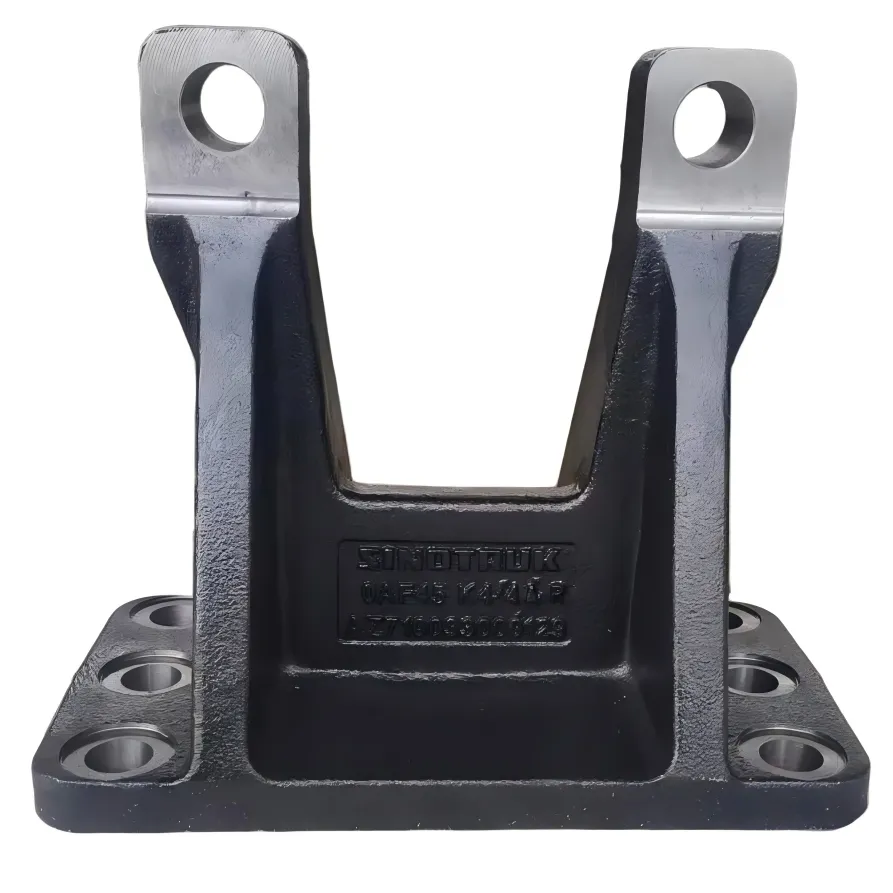Axle Thrust Rod Seats - Tang County Kaihua Metal Products Co., Ltd.
Introduction to Axle Thrust Rod Seats
In the complex world of commercial vehicle suspensions, the axle thrust rod seat plays a pivotal role in maintaining proper wheel alignment, handling stability, and load distribution. This often-overlooked component serves as the crucial connection point between the axle and chassis, absorbing tremendous forces while ensuring precise vehicle control. 
Key Functions of Axle Thrust Rod Seats
- Force Transmission: Transfers longitudinal forces between the axle and chassis.
- Alignment Maintenance: Keeps proper axle positioning during acceleration/braking.
- Vibration Damping: Absorbs road shocks before they reach the frame.
- Structural Reinforcement: Strengthens the axle housing at high-stress points.
- Suspension Geometry Control: Maintains correct suspension arm angles.
Types of Axle Thrust Rod Seats
1. Standard OEM Replacement Seats
Direct replacements for factory components. Match original specifications precisely.
2. Heavy-Duty Reinforced Seats
Thicker gauge steel construction. Additional gusseting for extreme loads. Common in mining and construction equipment.
3. Adjustable Alignment Seats
Allow fine-tuning of thrust rod angles. Feature slotted holes or eccentric bushings.
4. Rubber-Isolated Seats
Incorporate vibration-damping materials. Reduce noise transmission to chassis.
5. Aftermarket Performance Seats
Engineered for modified suspensions. Often include greaseable bushings.
Materials and Construction
- High-Grade Steel: Typically ASTM A572 or equivalent.
- Precision Castings: For complex shapes and consistent quality.
- Reinforced Welding: Critical stress points receive extra passes.
- Corrosion Protection: Powder coating or galvanization.
- Precision Machining: Accurate mounting surfaces and holes.
Design Features
- Load-Bearing Capacity: Engineered to handle specific GVWR requirements; stress-tested for dynamic loads.
- Bushing Compatibility: Accommodates various bushing types (rubber, polyurethane, spherical); proper interference fit for secure retention.
- Mounting Precision: Laser-cut mounting holes; machined reference surfaces.
- Serviceability: Accessible fasteners; replaceable wear components.
- Heat Treatment: Stress-relieved after welding; case-hardened contact surfaces.
Benefits of Quality Thrust Rod Seats
- Improved Handling Stability - Maintains proper wheel alignment.
- Extended Suspension Life - Reduces stress on connected components.
- Enhanced Safety - Prevents catastrophic suspension failures.
- Reduced Vibration - Minimizes driver fatigue and cargo damage.
- Cost Efficiency - Durable construction lowers maintenance costs.
Industry Applications
- Commercial Trucking: Semi-tractors, dump trucks, refrigerated trailers.
- Construction Equipment: Concrete pumpers, off-road haulers, crane carriers.
- Municipal Vehicles: Fire apparatus, waste collection trucks, street sweepers.
- Agricultural Machinery: Grain carts, liquid fertilizer applicators, harvest transporters.
- Military Vehicles: Tactical transporters, recovery vehicles, mobile command units.
Installation Best Practices
- Clean Mounting Surfaces - Remove rust and debris completely.
- Verify Alignment - Use laser alignment tools when available.
- Torque Fasteners Properly - Follow manufacturer specifications exactly.
- Lubricate Moving Parts - Apply recommended grease to bushings.
Maintenance Guidelines
- Monthly: Visual check for cracks or deformation.
- Quarterly: Bushing condition assessment.
- Annually: Complete fastener torque verification.
- As Needed: Corrosion treatment application.
Product Specifications Table
| Specification | Details |
|---|---|
| Material | ASTM A572 High-Grade Steel |
| Load Capacity | Up to 50,000 lbs (varies by model) |
| Bushing Type | Rubber, Polyurethane, or Spherical |
| Corrosion Protection | Powder Coating or Galvanization |
| Mounting Precision | Laser-Cut Holes, Machined Surfaces |
Selection Criteria
- Vehicle Compatibility: Exact make/model/year matching.
- Load Requirements: Verify GVWR capacity.
- Bushing Type: Match original or upgrade material.
- Construction Quality: Prefer forged over stamped components.
- Corrosion Protection: Essential for harsh environments.
Industry Standards
- SAE J1455: Heavy-duty suspension standards.
- OEM Engineering Specifications: Manufacturer-specific guidelines.
- ISO 9001: Quality Management Systems.
- DOT Compliance: For highway vehicles.
Conclusion
The axle thrust rod seat may be small, but its impact on vehicle performance is enormous. By maintaining critical alignment, absorbing tremendous forces, ensuring stable handling, and protecting other components, quality thrust rod seats deliver exceptional value through enhanced safety and reduced operating costs. For more information on high performance auto parts and unique car accessories, visit Tang County Kaihua Metal Products Co., Ltd., a trusted provider of auto parts and accessories for commercial vehicles.




